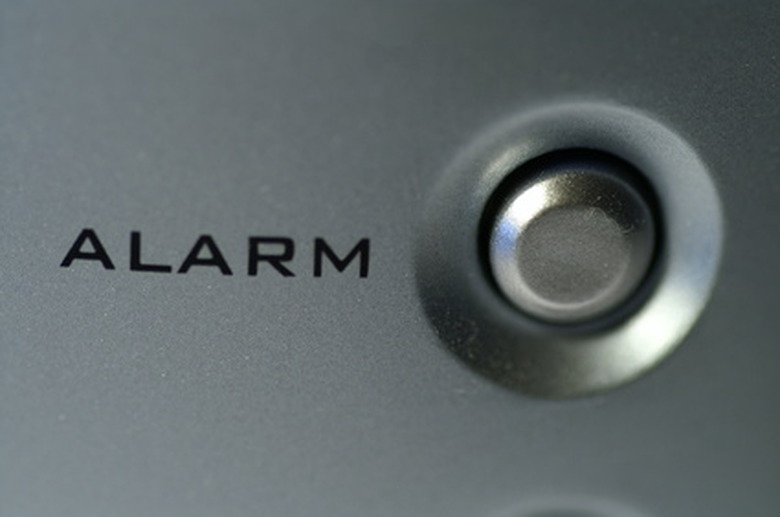How To Wire A Piezo Buzzer
Piezoelectric buzzers are used as cheap, dependable devices to generate an alarm tone in electronic circuits. A piezo buzzer consists of a piezoelectric disk wired to an oscillator. When electricity flows across the piezo electric disk, the disk bends. The oscillator sends an alternating electric signal across the piezo disk, causing it to bend first one way and then the other. This rapid bending back and forth pushes air, making a loud tone come out of the buzzer. Because piezo buzzers include oscillators, all you need to do to power one is attach it to a DC current source.
Step 1
Attach the positive (red) lead of a 9-volt battery connector to a push button switch. Insert the exposed wire at the end of the positive lead through the hole in one terminal of the switch. If the wire touches the second terminal, cut it shorter with a wire cutter or twist it around the switch lead.
Step 2
Plug in a soldering iron and allow it to heat up for 2 minutes or so. Place the tip against the lead and the wire where they meet. Touch the tip of a coil of rosin core solder against the lead. It will smoke and solder will flow onto the connection. As soon as a small layer of solder covers the wire and the lead, remove the soldering iron from the switch. Hold the wire and switch still for a few seconds to allow the solder to cool and harden.
Step 3
Attach the second lead of the switch to the red wire coming out of the piezo buzzer using the process in Steps 1 and 2. You should now have the red wire from the battery attached to one lead of the push button switch and the red wire from the buzzer attached to the other.
Step 4
Twist the black wire coming from the battery holder around the black wire coming from the piezo buzzer. Place the soldering iron against the spot where the two join and apply solder to the connection.
Step 5
Put a 9-volt battery in the battery holder. Press the button. The piezo buzzer should sound.
Things Needed
- Battery pack
- Switch
- Soldering iron
- Solder
- 9-volt battery
TL;DR (Too Long; Didn't Read)
Use as little solder as possible to cover the lead. Big blobs of solder are less reliable than small, neat connections.
Use a low-voltage (15-watt or lower) soldering iron and move it away from the switch as soon as possible. If you heat up the switch too much, you can destroy it.
Cite This Article
MLA
David, Isaiah. "How To Wire A Piezo Buzzer" sciencing.com, https://www.sciencing.com/wire-piezo-buzzer-7485211/. 24 April 2017.
APA
David, Isaiah. (2017, April 24). How To Wire A Piezo Buzzer. sciencing.com. Retrieved from https://www.sciencing.com/wire-piezo-buzzer-7485211/
Chicago
David, Isaiah. How To Wire A Piezo Buzzer last modified March 24, 2022. https://www.sciencing.com/wire-piezo-buzzer-7485211/
